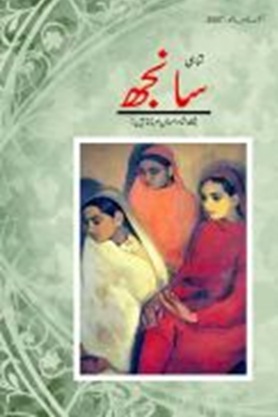My colleague at ISAS, Dr Sridharan, pointed out that the figures of 54 percent Muslims, 29 percent Hindus and 14 percent Sikhs refer to the 1941 Punjab census, which included the predominantly Hindi-speaking areas of the Ambala division of pre-partition Punjab inhabited mainly by Hindu Jats. If those areas are subtracted, then the percentage of Muslim Punjabis should be greater than 54 percent, while Sikhs probably are greater in number than Punjabi Hindus. In my opinion, however, there is another angle to this. Pakistan's 1981 Census shows Saraiki as a different language and not a dialect of Punjabi. It returns 48 percent as Punjabi-speakers and nearly 10 percent as Saraiki-speakers. Counting this way, the number of Punjabi-speaking Muslims should go down.
Another friend, Moni Chadha, was of the opinion that if the Jammu Hindus and some from Himachal Pradesh who speak Dogri (a dialect of Punjabi) are included, then probably Punjabi Hindus and Sikhs are equal in numbers. I think someone should look into these figures and update us with more accurate statistics. Also, some Sikh friends pointed out that one Indian president has been a Punjabi: Giani Zail Singh (1982-1987).
The problem of identity is most tricky and in the social sciences we are still struggling to understand this phenomenon. My own take is that identity is always multidimensional and people adjust and respond according to circumstances. The tragedy of many of us is not that we cannot distinguish between religious affiliations and our linguistic and cultural roots. We all speak Punjabi but are not literate in it. I cannot read the Gurmukhi script that is used in Indian Punjab, and with considerable difficulty read the Persian script (these days called Shahmukhi). For someone like me who has lived most of his life outside Punjab but wants to learn Punjabi, nothing is more attractive than to want to do it in a script that helps him follow what Punjabis are thinking in both Punjabs as well as globally. The Roman script would be the easiest to begin to read and write in Punjabi. Natasha Shaikh, a student at Toronto University, Canada, expressed the same preference for the Roman script.
Learning Punjabi in Roman script would by no means render Gurmukhi and Shahmukhi redundant. The Turks, Malaysians and Indonesians use the Roman script while Bengali Muslims use the Bengali script deriving from Devanagri. I see no reason why Muslim, Hindu, Sikh, and Christian Punjabis cannot begin to communicate with one another in the Roman script. They speak a common language but have no common script to relate to each other.
In my essay I argued that Punjabi has never been the language of an independent sovereign state, though in Indian Punjab it is the official language. This can be considered an advantage in the 21st century as it frees us from impossible political adventures. The second half of the 20th century was the era of decolonisation and creation of nation-states in Asia and Africa, with tightly demarcated international boundaries and border controls. They replaced the earlier frontiers and borders that loosely indicated the realm of different rulers. Pakistan and India came out of the logic of such territorially-demarcated nation-states.
The 21st century is going to be a movement in the opposite direction. International boundaries between states, especially in the same region, will become less and less functional and more and more symbolic, because trade and commerce will set in motion processes that will require the movement of capital, goods and people on a grand scale. Moreover, the need for cooperation on the environment, water resources and so on will render autarky unworkable. Regional integration is bound to come and it will be irreversible.
Given the history of 60 years of mutual antipathy and hostility, India and Pakistan are not going to become friends easily or quickly. Whenever that happens, it will have to be preceded by Punjabis on both sides and in the Diaspora playing their historical role in building trust and solidarity. As the most globalised of all South Asian nationalities, Punjabis are placed in a strategic situation to uphold cosmopolitanism and internationalism. Therefore, we would need a Punjabi idiom, vocabulary and script that are commensurate with regionalism and globalism.
The Punjabi renaissance must pick and choose from the variegated and contradictory legacies and heritages that have devolved upon us in the historical process. We need to discuss freely and frankly what is good in our heritage and what is bad, and expunge from our lives those aspects of our heritage that have justified oppression of one sort or another. All this presupposes that a strong and vibrant Punjabi intellectual movement is in place to lead the Punjabi renaissance.

The Academy of the Punjab in North America (APNA), under the very able leadership of Safir Rammah, already provides classical and contemporary Punjabi writings in both Shahmukhi and Gurmukhi scripts. APNA's journal, Sanjh (Common Bond), launched last year simultaneously from Lahore and Ludhiana, is a pioneer in connecting the two Punjabs. APNA also advises on software tools and programmes to enable translations into the Roman script. We need many more such initiatives but also concerted efforts to write in Roman to effect an efflorescence of Punjabi culture that is inclusive and not exclusive.
